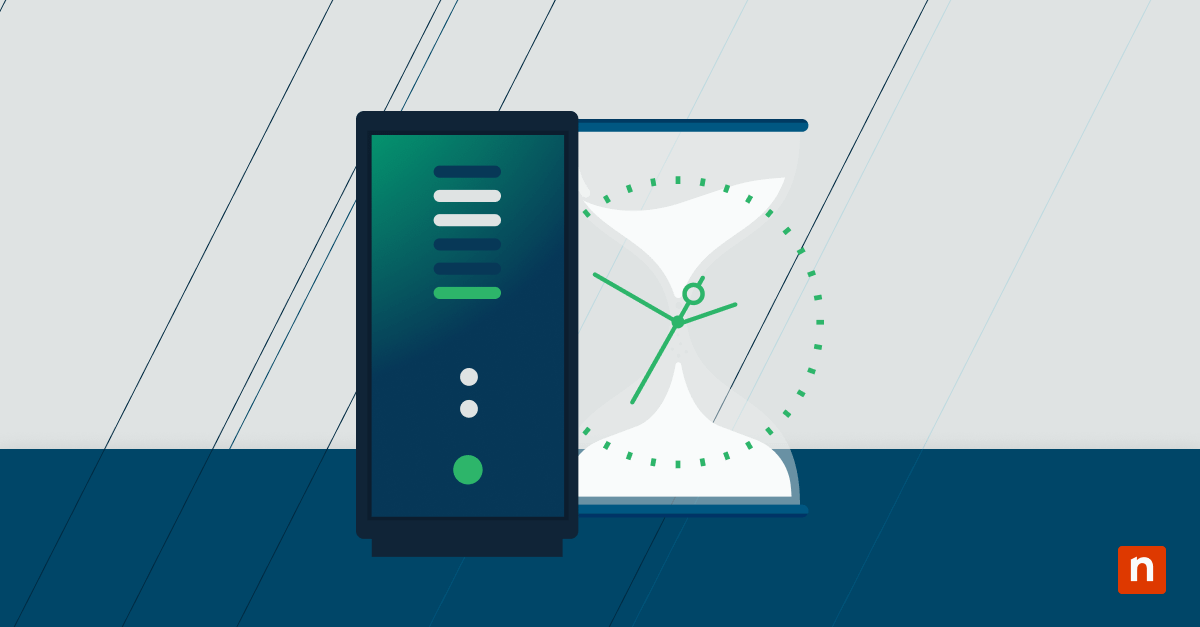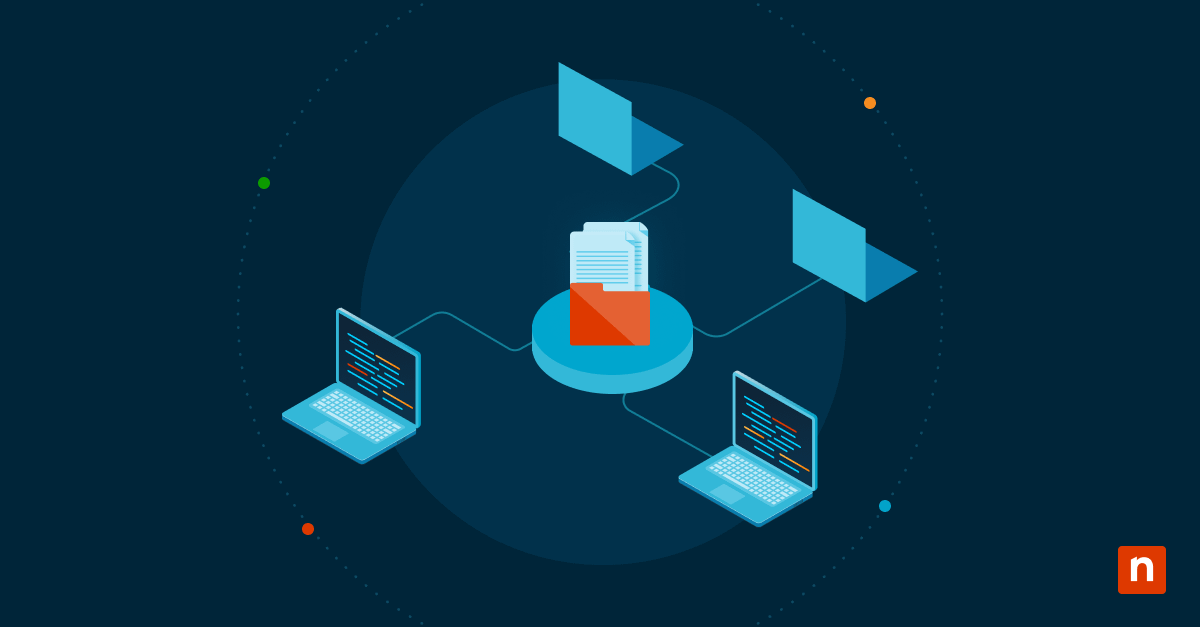In this article, you will learn effective ways on managing IT costs. With Gartner forecasting worldwide IT spending to grow by 9.3% in 2025, it’s crucial that you sit down with relevant stakeholders to identify your organization’s business goals, create new strategies leveraging evolving technologies such as machine learning and generative AI, and streamline your IT budget.
Learn how to maximize your profit margins with the powerful combination of NinjaOne and HaloPSA.
→ Watch this on-demand seminar, “Stop Leaving Money on the Table”.
What is IT cost management?
IT cost management is a systematic method for planning, controlling, and evaluating technology-related expenses. It involves analyzing your current IT spending, identifying areas for improvement, and implementing strategies to managing IT without compromising performance. Adopting a proactive stance towards IT cost management lets you allocate resources more efficiently, improve budget forecasting, and align IT spending with your overall business objectives.
Why is IT cost management important?
Simply: It directly impacts operational efficiency. With IT costs growing exponentially each year (with no expectations of plateauing any time soon), organizations must develop robust and comprehensive IT cost management strategies to continue operating. After all, business leaders cannot continue providing excellent service to their customers and properly account for estimated project costs if they cannot afford it.
Start by gaining a comprehensive understanding of your current IT landscape. This includes mapping out all your technology assets, services, and associated IT tool costs. With this foundation, you’ll be better equipped to make informed decisions about where to cut costs and where to invest for maximum return.
Expert tip: Are you an MSP? We recommend downloading our free managed services pricing calculator to help you determine your MSP COGS (cost of goods sold), total gross profit and profit %, and lots more!
12 Common IT costs
Understanding the various components contributing to your IT expenses is necessary for effective IT cost management. Knowing what contributes to IT costs can help you take more appropriate and realistic measures to manage them.
1. Hardware and software expenses
Hardware costs encompass a wide range of physical equipment, from servers and networking devices to end-user devices like computers and mobile phones. When managing these IT costs, consider factors such as lifecycle management, bulk purchasing, and leasing options to optimize your spending.
Software expenses include licensing fees, subscription costs, and maintenance agreements. To keep these IT tool costs in check, regularly review your software inventory to eliminate redundant or underutilized applications. Additionally, explore volume licensing agreements and open-source alternatives where appropriate.
2. Cybersecurity defenses
Protecting your digital assets is an everyday need of modern IT management. Cybersecurity costs encompass a range of expenses, including endpoint protection costs, security software licenses, hardware appliances, and specialized personnel. As cyber threats continue to evolve, you’ll need to allocate a significant portion of your IT budget to maintain strong security measures and stay ahead of potential risks.
We’ve written a comprehensive guide on creating a modern cybersecurity strategy to help reduce costs in your organization. Taking proactive steps now can signifcantly help in managing IT costs.
3. Maintenance and support costs
Ongoing maintenance and support are essential for keeping your IT infrastructure running smoothly. These activities include IT costs for hardware repairs, software updates and technical support services. Consider implementing preventive maintenance programs and exploring managed services options that can provide predictable costs and improved service levels as effective measures in managing IT costs.
4. Cloud services and subscriptions
As businesses increasingly adopt cloud technologies, managing associated costs has become a critical aspect of IT budgeting. Cloud expenses can fluctuate based on usage, making it essential to implement robust monitoring and optimization strategies. Consider using cloud cost management tools to track spending, identify waste, and right-size your cloud resources.
5. Staffing and training costs
Your IT team is a valuable asset, representing a significant portion of your IT budget. Staffing costs include salaries, benefits, and ongoing training expenses. To optimize these costs, focus on building a skilled and versatile team that can handle a wide range of IT tasks. As part of your IT cost management plan, consider investing in continuous learning and cross-training to improve efficiency and reduce the need for specialized external resources.
Expert tip: We explore best practices for organizing and improving IT training within your company. Check out this on-demand webinar, “Upskill your IT team: Build a Learning Culture for Success”.
6. Data storage and backup costs
Data storage and backup are critical components of an IT infrastructure. Storage solutions can include on-premises systems like SAN (storage network area) or NAS (network-attached storage) or cloud-based options such as AWS S3, Azure Blob Storage, and Google Cloud Storage. If you’re currently managing a hybrid workforce, it may be better to consider cloud backup options. Here’s a more comprehensive guide on cloud backup pricing to help simplify the decision-making process.
7. Network and connectivity costs
Network and connectivity costs cover the infrastructure required to keep an organization connected and operational. IT cost management for this expense includes routers, switches, firewalls, physical cabling, internet service fees, MPLS connections, SD-WAN implementations, and VPN solutions.
8. Compliance and regulatory costs
Compliance-related costs include auditing fees, specialized software for monitoring and reporting, and trained staff to maintain standards like GDPR, HIPAA, or PCI-DSS. For example, if you’re looking for the best HIPAA-compliant cloud backup service, you may need to pay more for more specialized features.
9. Disaster recovery and business continuity costs
Business continuity and disaster recovery plans are essential for minimizing downtime during downtimes or unexpected events. These IT costs include investments in redundancy measures, such as secondary data centers, failover systems, and DRaaS (disaster recovery as a service) solutions. To avoid overspending, businesses should focus on aligning disaster recovery plans with the most critical systems and processes.
10. IT asset management costs
IT asset management covers the IT costs of tracking, maintaining, and managing IT assets throughout their lifecycle. This includes investments in asset tracking software, conducting regular audits, and reconciling inventories. Using automated IT asset management software like NinjaOne can streamline this process, lowering labor costs and reducing the risk of mismanagement.
→ Start a 14-day free trial of NinjaOne RMM.
11. Vendor costs
Many IT organizations rely on multiple vendors to meet their specific IT needs. Vendor costs include managing contracts, renewals, and service-level agreements (SLAs). Consolidating vendors where possible and negotiating long-term contracts can lead to significant savings. We recommend conducting a vendor risk assessment to ensure you work with a reputable service provider.
12. Innovation costs
Investing in innovation and research is crucial for organizations looking to stay ahead in a competitive landscape. These IT costs may include exploring emerging technologies such as artificial intelligence (like AIOps), IoT, and even nanotechnology! While these investments can be substantial, you must consider long-term returns to maintain a competitive advantage over your peers.
Effective IT budgeting
A well-planned IT budget serves as the foundation for successful cost management. Here’s how you can approach IT budgeting more effectively:
Forecasting IT expenses
Accurate forecasting is key to avoiding budget overruns and ensuring adequate funding for top IT initiatives. Start by analyzing historical spending patterns and identifying trends. Factor in planned projects, technology refreshes, and potential changes in business requirements. Use a combination of bottom-up and top-down budgeting techniques to create a comprehensive and realistic forecast. We discuss this in more in-depth in this guide on best practices for IT budgeting.
Allocating resources based on priorities
Once you’ve estimated your total IT budget, it’s time to allocate resources strategically. Prioritize initiatives that align closely with your business goals and have the potential to deliver the highest return on investment. Consider using a scoring system to evaluate and rank different IT projects based on factors such as business impact, risk, and cost.
Nevertheless, we strongly urge balance. It can be quite tempting to reduce IT expenses to improve your budget dramatically—but at the cost of superior service. When considering IT cost management, you should take extra precautions to reduce IT expenses without compromising service.
Managing unexpected costs
Despite careful planning, unexpected IT costs can arise from factors like security vulnerabilities, hardware failures, or sudden changes in business needs. Establish a contingency fund within your IT budget to prepare for these situations. Aim to set aside 5-10% of your total IT budget for unforeseen expenses. Additionally, a process for quickly evaluating and approving emergency IT spending should be developed when necessary. It’s also a good idea to learn how to pitch any IT budget changes to the C-suite, so you have a higher chance of getting it approved.
Best practices for ongoing IT cost management
Effective IT cost management is an ongoing process that requires continuous attention and refinement. Here are some best practices to help you maintain control over your IT expenses:
Regular cost reviews and adjustments
Schedule periodic reviews of your IT spending to identify areas where costs may be creeping up or where new savings opportunities have emerged. This practice allows you to make timely adjustments to your IT budget and spending patterns. Consider implementing a quarterly review cycle with a more comprehensive annual review to align with your overall business planning process.
During these reviews, pay special attention to:
- Underutilized resources or services
- Contracts nearing renewal dates
- Technologies nearing end-of-life or requiring upgrades
- Changes in business requirements that may impact IT needs
Leveraging cost-saving technologies
Embrace technologies that can help reduce your overall IT costs. For example:
- Automation tools can streamline repetitive tasks, reducing labor costs and improving efficiency.
- Virtualization technologies can help consolidate servers and reduce hardware expenses.
- Energy-efficient hardware and power management solutions can lower electricity costs in your data centers and office environments.
- Remote management tools can reduce the need for on-site support, cutting travel expenses and improving response times.
When evaluating new technologies, always consider the total cost of ownership, including implementation, training, and ongoing maintenance costs.
Continuous training and upskilling of IT staff
Investing in your IT team’s skills can lead to significant cost savings in the long run. By enhancing your staff’s capabilities, you can reduce reliance on expensive external consultants and improve overall productivity. Encourage your team to pursue relevant certifications and stay up-to-date with emerging technologies.
Consider implementing a knowledge-sharing program within your IT department to maximize the impact of training investments. This practice helps spread expertise across the team and ensures that skills are not concentrated in a few individuals.
Create a continuous learning culture in your company to ensure all team members stay current with industry trends.
Watch this on-demand webinar on building a champion IT team.
Create a continuous learning culture in your company to ensure all team members stay current with industry trends.
Watch this on-demand webinar on building a champion IT team.
Achieving long-term IT cost efficiency
To achieve sustained IT cost efficiency, you must shift from a reactive mindset to a proactive mindset. This involves:
- Developing a long-term IT strategy that aligns with your business goals.
- Implementing governance processes to ensure IT spending remains aligned with priorities.
- Fostering a culture of cost-consciousness within your IT team and across the organization.
- Regularly benchmarking your IT costs against industry standards to identify improvement opportunities.
- Exploring innovative IT delivery models, such as managed services or shared service centers, to optimize costs further.
Remember, the goal of IT cost management isn’t just to reduce expenses but to maximize the value of your IT investments. Following the strategies and best practices outlined in this guide will enable you to manage your IT costs effectively while driving innovation and supporting your organization’s growth.
How NinjaOne helps with IT cost management
NinjaOne supports these IT cost management efforts by saving time to IT teams. As a force multiplier, NinjaOne enables you to accomplish more with your existing resources and headcount. By leveraging centralized management, remote tools, and automation, you can enhance your IT team’s efficiency while managing IT costs. Sign up for a free trial or watch a demo.








